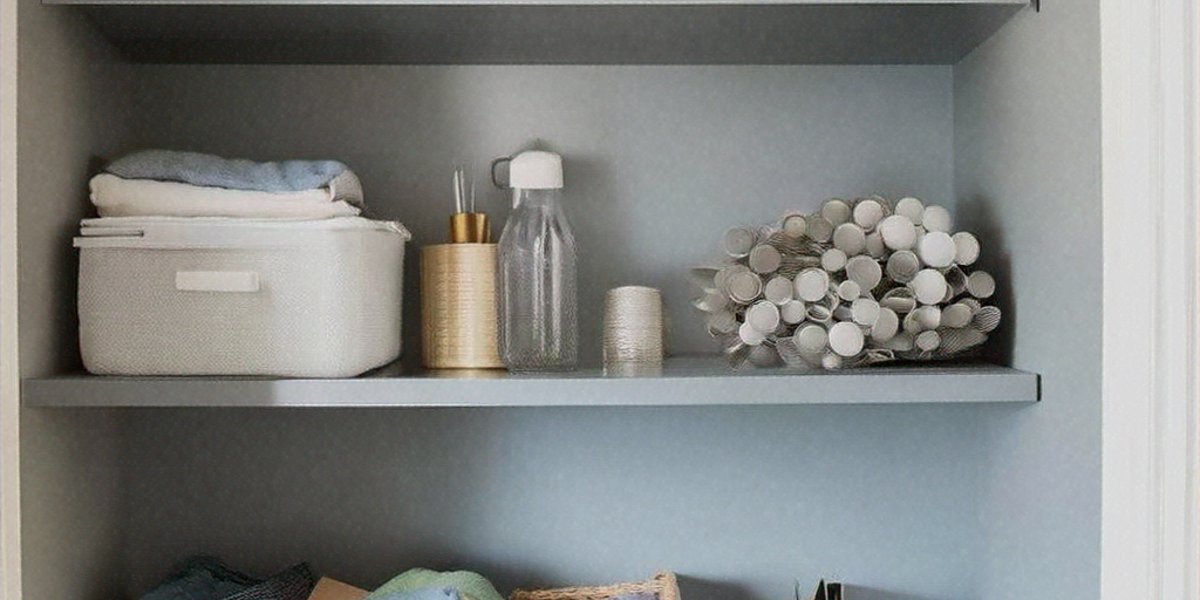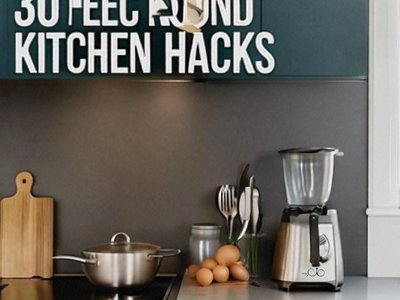Declutter Your Home in a Weekend
You don't need a month—just a plan. This 2-day sprint clears space and sets up habits to keep it that way, transforming your home from a storage unit into a sanctuary.
Friday Prep (30 Minutes)
Gather Your Supplies
Collect four large boxes or bins and label them clearly: Keep, Donate, Sell, and Trash. You'll also need trash bags, cleaning supplies, and a timer. Having everything ready eliminates decision fatigue and keeps you moving efficiently.
Set Your Rules
Establish clear criteria for what stays and what goes. If you haven't used it in 12 months, it's gone. If it doesn't fit your life today, it's gone. If it's broken and you haven't fixed it in 6 months, it's gone. These rules eliminate emotional decision-making and keep you focused on results.
Plan Your Zones
Break your home into manageable zones and assign time limits: 45-60 minutes per zone. This prevents overwhelm and ensures you complete the entire project. Write down your zone list and time allocations to keep yourself accountable.
Saturday – High-Impact Zones
1. Entryway (45 minutes)
The entryway is your home's funnel - it must be clean and functional. Clear all surfaces of mail, keys, and random items. Install a shoe rack and coat hooks if you don't have them. Create a designated spot for incoming items like mail and packages. The goal is to walk in and immediately feel organized.
2. Kitchen (60 minutes)
Kitchens accumulate duplicates and unused gadgets quickly. Remove all items from cabinets and drawers, then sort by frequency of use. Keep only one of each type of tool (one spatula type, one chef's knife, one cutting board per use case). Donate or sell the rest. Organize remaining items by function rather than type.
3. Living Room (45 minutes)
Living rooms become catch-alls for random items. Clear all surfaces and create designated homes for remotes, magazines, and other frequently used items. Hide cords and cables using cord organizers. Reserve one shelf for display items only - everything else must have a functional purpose.
Sunday – Closets and Paper
1. Closet (60 minutes)
Closets are emotional minefields. Try on every piece of clothing and be brutally honest. If it doesn't fit perfectly, if you haven't worn it in a year, or if it doesn't make you feel confident, it goes. Create a capsule wardrobe with pieces that mix and match. Organize by color and season.
2. Paper Management (60 minutes)
Paper clutter is overwhelming but manageable. Create three piles: Scan (important documents), File (reference materials), and Recycle (everything else). Invest in a scanner or use your phone to digitize important papers. Set up a simple filing system with broad categories like "Financial," "Medical," and "Personal."
3. Bathroom (30 minutes)
Bathrooms accumulate expired products and half-used items. Toss anything expired, consolidate duplicates, and keep only a 30-day supply of consumables. Organize by frequency of use, with daily items easily accessible and specialty items stored away.
Advanced Decluttering Techniques
The Four-Box Method
Use the four-box system for every zone: Keep (essential items you use regularly), Donate (good condition items others can use), Sell (valuable items worth selling), and Trash (broken or unusable items). This method prevents decision paralysis and ensures nothing gets overlooked.
The 20/20 Rule
If you can replace an item for less than $20 in less than 20 minutes, consider letting it go. This rule helps eliminate "just in case" items that take up valuable space. You can always replace something if you actually need it.
The One-Year Test
If you haven't used something in the past year, you probably won't use it in the next year. This simple rule eliminates most sentimental clutter and unused items. Be honest about your actual lifestyle, not the lifestyle you wish you had.
Make It Stick
One-In, One-Out Rule
For every new item that comes into your home, one item must leave. This prevents re-accumulation and forces you to think carefully about new purchases. It also keeps your home at a manageable size permanently.
Nightly 5-Minute Reset
Spend 5 minutes each evening resetting your main living areas. Clear counters, put away items, and reset surfaces. This small daily habit prevents the weekend decluttering from becoming necessary again.
Donation Bag System
Keep a donation bag in your closet that you fill as you go. When it's full, take it to your car and drop it off at a donation center. This creates a continuous flow of items leaving your home rather than a massive purge once a year.
Psychological Aspects of Decluttering
Decision Fatigue Management
Decluttering requires thousands of decisions, which can be exhausting. Take breaks every 45 minutes, stay hydrated, and work in short, focused sessions. Don't try to do everything at once.
Emotional Attachment Handling
Some items have emotional significance that makes them hard to let go. Take photos of sentimental items before donating them, or keep only the most meaningful pieces. Remember that memories live in your mind, not in objects.
Perfectionism Prevention
Don't let perfect be the enemy of good. A 70% decluttered home is better than a 100% cluttered one. Focus on progress, not perfection. You can always refine later.
Maintenance Strategies
Monthly Mini-Declutter
Set aside 30 minutes each month to review one area of your home. This prevents major decluttering projects from becoming necessary again and keeps your home organized year-round.
Seasonal Reviews
Conduct a thorough review of your home each season. Donate seasonal items you didn't use, reorganize storage areas, and adjust your systems based on changing needs.
Digital Decluttering
Don't forget about digital clutter. Clean up your computer files, organize your email inbox, and declutter your phone apps. Digital clutter can be just as overwhelming as physical clutter.
Common Decluttering Mistakes
Starting Without a Plan
Jumping in without a clear plan leads to overwhelm and incomplete projects. Always start with preparation and planning, even if it takes an extra 30 minutes.
Keeping Items "Just in Case"
"Just in case" items rarely get used and take up valuable space. If you can replace something easily and affordably, let it go. You'll have more space for things you actually use and love.
Decluttering Without Organizing
Decluttering removes items, but organizing creates systems. Don't stop at decluttering - create logical homes for everything you keep so it's easy to maintain.
Space is a decision, not an accident. Decide once, live lighter. The key to successful decluttering is not just removing items, but creating systems that prevent re-accumulation. Start with the high-impact zones, use the four-box method, and establish maintenance habits. Your future self will thank you for the clarity and peace that comes with a decluttered home.
Room-Specific Decluttering Strategies
Bedroom Deep Clean
Clothing assessment: Try on every piece of clothing and ask: Does it fit? Do I love it? Does it serve a purpose? If any answer is no, it goes.
Bedside table organization: Keep only essential items: lamp, book, water glass, phone charger. Remove everything else to create a calm, uncluttered space.
Under-bed storage: Use under-bed storage for seasonal items only. Avoid storing random items that create visual clutter.
Closet organization: Organize by category (tops, bottoms, dresses, outerwear) then by color within each category. This makes getting dressed faster and more enjoyable.
Kitchen Transformation
Appliance audit: Remove all appliances and test each one. If you haven't used it in 6 months, it goes. Keep only appliances that serve multiple purposes or are used weekly.
Pantry organization: Group items by category (baking, canned goods, snacks) and use clear containers for bulk items. Label everything clearly.
Counter space: Keep only 3-5 items on your counter. Everything else should be stored in cabinets or drawers. This creates a clean, professional look.
Spice organization: Consolidate duplicate spices, organize alphabetically, and keep only spices you use regularly. Donate or discard expired or unused spices.
Living Room Reset
Surface clearing: Remove all items from coffee tables, end tables, and TV stands. Only return items that serve a purpose or bring you joy.
Entertainment center: Organize cords and cables, remove unused devices, and create a clean, minimal setup.
Book organization: Keep only books you love, plan to read, or reference regularly. Donate the rest to libraries or book exchanges.
Display items: Choose 3-5 meaningful items to display. Everything else should be stored or donated. This creates focus and visual interest.
Emotional and Psychological Challenges
Dealing with Sentimental Items
Memory preservation: Take photos of sentimental items before donating them. This preserves the memory without taking up physical space.
The 10-item rule: Allow yourself to keep only 10 truly sentimental items. This forces you to choose what's most meaningful.
Story preservation: Write down the stories behind important items. The story is often more valuable than the object itself.
Gradual letting go: If you're struggling with a particular item, put it in a "maybe" box and revisit it in 30 days. Most items lose their emotional hold over time.
Overcoming Decision Fatigue
Time limits: Set strict time limits for each zone to prevent overthinking. 45 minutes per zone is optimal for maintaining focus.
Break structure: Take 15-minute breaks every 90 minutes. Use this time to hydrate, stretch, and reset your mental energy.
Decision frameworks: Use simple rules like "If I haven't used it in a year, it goes" to reduce decision complexity.
Batch decisions: Make similar decisions together. For example, decide on all clothing items at once rather than piece by piece.
Managing Perfectionism
Progress over perfection: Aim for 80% completion rather than 100%. You can always refine later.
The good enough rule: If something is functional and you use it regularly, it's good enough. Don't replace it just to have something "perfect."
Iterative improvement: Decluttering is a process, not a one-time event. Focus on making progress rather than achieving perfection.
Advanced Organization Systems
The KonMari Method Adaptation
Category-based decluttering: Work through categories (clothing, books, papers, komono, sentimental) rather than rooms.
Joy-based decisions: Ask "Does this spark joy?" for each item. If not, thank it and let it go.
Proper storage: Store items vertically when possible, fold clothing using the KonMari method, and create designated homes for everything.
Respect for belongings: Treat your possessions with respect by storing them properly and using them mindfully.
Digital Decluttering Integration
Photo organization: Delete duplicate photos, organize by date and event, and create a backup system.
Email management: Unsubscribe from unnecessary emails, create folders for important categories, and archive old emails.
App cleanup: Remove unused apps from your phone and computer. Organize remaining apps into logical folders.
File organization: Create a logical folder structure on your computer and stick to it consistently.
Long-Term Maintenance Strategies
Weekly Maintenance Routines
Sunday reset: Spend 30 minutes each Sunday resetting your home to its decluttered state.
Daily 5-minute tidy: Spend 5 minutes each evening putting things away and resetting surfaces.
Weekly donation run: Take a bag of donations to your car each week and drop it off when convenient.
Monthly review: Spend 30 minutes each month reviewing one area of your home for potential decluttering.
Seasonal Decluttering Cycles
Spring cleaning: Focus on deep cleaning and organizing after winter months.
Summer preparation: Organize outdoor spaces and prepare for summer activities.
Fall organization: Prepare for indoor activities and organize for the holiday season.
Winter reset: Organize indoor spaces and prepare for winter activities.
Habit Formation
The 21-day rule: Practice new organizing habits for 21 days to make them automatic.
Habit stacking: Attach new organizing habits to existing routines (e.g., organize kitchen after making coffee).
Visual reminders: Use sticky notes, apps, or other reminders to maintain new habits.
Accountability partners: Share your decluttering goals with friends or family for accountability.
Troubleshooting Common Issues
When You Get Stuck
Decision paralysis: If you can't decide on an item, put it in a "maybe" box and revisit it in 30 days.
Emotional overwhelm: Take a break and return to decluttering when you feel calmer. Don't force yourself to continue when overwhelmed.
Perfectionism: Remember that 80% completion is better than 0%. Focus on progress, not perfection.
Time constraints: Break decluttering into smaller sessions if you don't have a full weekend available.
When Family Members Resist
Lead by example: Start with your own spaces and let family members see the benefits.
Involve everyone: Include family members in the decluttering process and respect their decisions about their own items.
Compromise: Find middle ground that works for everyone. Not every space needs to be perfectly organized.
Education: Share the benefits of decluttering and organizing with family members.
When Clutter Returns
Identify the source: Figure out why clutter is returning and address the root cause.
Adjust systems: Modify your organization systems to better fit your lifestyle and habits.
Regular maintenance: Increase the frequency of maintenance routines if clutter is returning quickly.
Professional help: Consider hiring a professional organizer if you're struggling to maintain organization.
The Psychology of Space
How Clutter Affects Mental Health
Visual stress: Clutter creates visual noise that can increase stress and anxiety.
Decision fatigue: Too many choices can lead to decision fatigue and reduced productivity.
Emotional weight: Physical clutter can create emotional weight and feelings of being overwhelmed.
Creativity impact: Cluttered spaces can inhibit creativity and problem-solving abilities.
The Benefits of Decluttering
Mental clarity: Clean spaces promote mental clarity and focus.
Reduced stress: Organized environments reduce stress and promote relaxation.
Increased productivity: Clear spaces make it easier to focus and accomplish tasks.
Better relationships: Organized homes can improve family relationships and reduce conflict.
Building Sustainable Habits
Start Small
Choose 2-3 decluttering habits to implement first. Once these become automatic, add more.
Track Progress
Keep a simple log of decluttering sessions and progress made. This helps maintain motivation.
Celebrate Success
Acknowledge and celebrate your decluttering achievements, no matter how small.
Continuous Improvement
View decluttering as an ongoing process rather than a one-time event.
Conclusion
Decluttering your home in a weekend is not just about removing physical items—it's about creating space for what matters most in your life. The process can be challenging, but the rewards are immediate and long-lasting.
Remember that decluttering is a journey, not a destination. Start with the high-impact zones, use proven methods like the four-box system, and establish maintenance habits that work for your lifestyle. The key is consistency, not perfection.
Your home should be a sanctuary that supports your goals and reflects your values. By removing unnecessary items and creating logical systems, you'll find that you have more time, energy, and mental space for the things that truly matter.
The weekend decluttering sprint is just the beginning. The real transformation happens in the daily habits and routines you establish to maintain your organized space. With commitment and consistency, you'll create a home that works for you rather than against you.
Start this weekend, and you'll be amazed at how much lighter and more peaceful your home feels. The space you create will become the foundation for a more intentional, organized, and fulfilling life.


